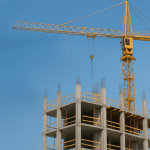
1. Sustainable and Green Building Practices
One of the Top priorities in construction is sustainability. With stricter regulations and rising environmental awareness, developers are increasingly adopting eco-friendly materials and energy-efficient solutions. From solar-integrated roofing systems to low-carbon concrete, green construction is no longer optional—it is becoming the standard. Clients and governments alike demand buildings that minimize carbon footprints while maximizing long-term value.
2. Smart Technology and Automation
The Top innovations in construction involve integrating smart technology into building processes. Automation tools such as drones, robotics, and 3D printing are streamlining tasks that once required extensive manpower. Drones now survey large construction sites in minutes, while robotics handle repetitive tasks with precision. Meanwhile, smart buildings equipped with IoT systems can self-monitor energy consumption and maintenance needs, offering unmatched efficiency for owners.
3. Modular and Prefabricated Construction
Prefabrication and modular designs are making waves as one of the Top solutions for speed, cost-effectiveness, and reduced waste. Factories now manufacture building components off-site, which are then assembled quickly on location. This method reduces delays, improves quality control, and allows projects to finish ahead of traditional timelines. With the global demand for affordable housing, modular construction is expected to be a key driver of change in 2025.
4. Emphasis on Health and Wellness Design
Another Top priority in modern construction is the focus on creating healthier environments for occupants. Post-pandemic trends highlight the importance of indoor air quality, natural lighting, and ergonomic layouts. Buildings are being designed with advanced ventilation systems, biophilic elements, and touch-free technologies to enhance safety and overall well-being. Developers are recognizing that a healthy living or working space is not just an add-on but a core requirement.
5. Artificial Intelligence and Data Analytics
AI has cemented its place as one of the Top technologies in construction. Machine learning models are helping predict project risks, optimize resource allocation, and reduce costs. AI-powered platforms can forecast material requirements, identify potential delays, and even improve worker safety by monitoring site conditions. With data becoming the backbone of decision-making, construction companies can achieve higher efficiency and transparency.
6. Advanced Materials and Innovation
The use of advanced materials is another Top trend revolutionizing construction. Self-healing concrete, transparent aluminum, and graphene-based products are pushing the boundaries of durability and performance. These materials not only extend the lifespan of structures but also contribute to energy efficiency. With continued research, innovative materials will redefine how we think about safety, sustainability, and aesthetics in the built environment.
7. Workforce Transformation and Training
While technology is reshaping construction, people remain at the core of progress. One of the Top challenges in 2025 is addressing the labor shortage through advanced training and skill development. Virtual reality (VR) and augmented reality (AR) are now widely used for worker training, simulating real-world scenarios in safe environments. Upskilling programs are ensuring that workers adapt to digital tools while maintaining traditional craftsmanship.
ion are being deployed for repetitive construction tasks, reducing labor costs and improving precision. Artificial Intelligence (AI) and Machine Learning (ML) are being integrated into project planning and predictive maintenance. Sustainability-focused tools, such as energy modeling software and carbon footprint calculators, are also gaining prominence as the industry pushes toward greener practices. Staying updated with these innovations will be crucial for engineers who want to remain competitive.
8. Resilient and Climate-Adaptive Infrastructure
The Top construction priorities now extend to resilience against climate change. Projects are increasingly designed to withstand extreme weather events, from flooding to high temperatures. Climate-adaptive designs, stormwater management systems, and disaster-resistant structures are shaping the way cities are built. Governments and private developers alike are investing heavily in resilient infrastructure to protect communities and reduce long-term risks.
9. Digital Twins and Virtual Modeling
Among the most innovative Top technologies of 2025 is the rise of digital twins. These virtual replicas of physical assets allow real-time monitoring, simulation, and predictive maintenance. Construction companies are using digital twins to improve collaboration, detect issues before they occur, and enhance the lifecycle management of projects. When combined with Building Information Modeling (BIM), digital twins offer unprecedented visibility and control.
10. Client-Centered and Customizable Solutions
Finally, the Top demand from clients today is personalization. Developers and contractors are leveraging technology to provide tailored solutions, from smart home integrations to unique architectural designs. Client-centered construction emphasizes communication, flexibility, and the ability to adapt projects to specific needs. This trend reflects a broader shift in the industry toward customer satisfaction as a primary driver of growth.
Conclusion
The construction industry in 2025 is defined by rapid transformation, with sustainability, technology, and client-focused strategies leading the way. By embracing these Top trends, companies can stay competitive, future-ready, and aligned with global progress. Whether it’s through smart technology, advanced materials, or climate-resilient designs, the industry is moving toward a future where innovation and responsibility go hand in hand.
At Charminar, we remain committed to adopting these forward-thinking practices, ensuring our clients benefit from projects that are not only high-quality but also sustainable and future-proof. The future of construction is already here, and those who adapt quickly will set the benchmarks for excellence.
Ready to Build with Confidence?
Get in touch with Charminar to learn how our project management expertise can streamline your next development.
📧 contact@bluediamondfm.com
📞 +971 56 705 4223
🌐 https://charminardubai.com/
Frequently Asked Questions (FAQ)
Why are sustainable practices considered one of the Top construction trends in 2025?
Sustainable practices reduce environmental impact, lower operating costs, and meet regulatory requirements. They also align with client demand for eco-friendly solutions, making them a key driver in modern construction.
How is smart technology changing the construction industry?
Smart technology, including drones, robotics, and IoT systems, enhances efficiency, safety, and accuracy. It reduces manual errors, speeds up project timelines, and enables buildings to self-monitor performance.
What advantages do modular and prefabricated buildings offer?
Modular construction saves time, reduces waste, and ensures consistent quality. Prefabricated components are built off-site and quickly assembled on-site, helping projects finish faster and more cost-effectively.
What role does artificial intelligence play in construction?
AI helps predict project risks, optimize resource allocation, and improve safety. It uses data analytics to forecast materials, detect potential delays, and support smarter decision-making.
Why is workforce transformation essential in 2025?
With digital tools becoming standard, workers need new skills to adapt. Training through VR, AR, and upskilling programs ensures the workforce stays competitive and safe.







